Using an Antibacterial Face Wash
It is common nowadays to find a wide array of antibacterial face wash products that claim to do miracles, though their actual results are questionable. You’ve probably even seen or heard of one or two brands out there being marketed as the best antibacterial face wash around. Whether it’s via TV, beauty magazine, radio, or an ad on your favorite Pandora station; it’s common to hear antibacterial face wash products being touted as the perfect solution to get rid of acne or oily skin. However, with all these choices, it’s easy to become confused about which is the best antibacterial face wash; making it essential to take an in-depth peek into these products. Which products should you go for? Why even use an antibacterial face wash in the first place?
Related: Best Face Washes
The Purpose of an Antibacterial Face Wash
First and foremost, an antibacterial face wash plays a massive role in fighting many skin problems, like acne, for example. Acne is a common condition especially among teenagers, though many adults develop chronic acne as well. Because of social pressure to have flawless skin, finding ways to get rid of acne has become almost essential. That’s where an antibacterial face wash might come to the rescue! With proper washing of the skin, and deeply-penetrating ingredients like salicylic acid, acne-causing bacteria can be flushed away; thus reducing the number of breakouts you experience.
Another use for an antibacterial face wash is to prevent folliculitis. This is a problem wherein a bacterial infection that affects the hair follicles of your skin, leading to redness and inflammation similar to acne. In some cases, folliculitis may even require medical intervention and treatment with antibiotics.
By including an antibacterial face wash in your routine, painful problems like folliculitis can be prevented.
How Does and Antibacterial Face Wash Work?
So how does an antibacterial face wash work? Most such products tend to fight bacteria by opening up skin pores, removing excessive skin oil and flushing out dirt.
The ingredients in antibacterial face wash often include triclosan, a chemical that destroys bacteria and other pathogens. However, though this chemical was very popular at one time, it has also been known to accumulate in the body and has been linked to health issues.
How to Apply an Antibacterial Face Wash
To effectively use an antibacterial face wash you will need to wash your face first with lukewarm water to make it wet. Apply a small amount the antibacterial face wash on fingertips and rub it around your face in a circular manner to help push ingredients deeper into the pores and skin. Rinse your face with warm water again; this time to get rid of traces of the antibacterial face wash cleanser.
Highly Recommended
We recommend Carrot & Stick and Formulyst skin care products.
What to Avoid in Antibacterial Face Wash
Dermatologists tend to discourage antibacterial face wash products that contain detergents. Some antibacterial face wash products contain harsh chemical components such as triclocarban or triclosan. These ingredients can be harmful, especially to those with sensitive skin. Further, these chemicals are also often present in toothpastes and other antibacterial products. This is important to note, because they can accumulate in your body over time. Therefore, if you have multiple products with triclocarban or triclosan in your daily routine, you’re exposing yourself to greater risk of side effects.
Antibacterial Face Wash Tips
Always take precautionary measures when using antibacterial face wash products you encounter. A face wash that works very well with your friend might not work well with you, because your skin is unique. For example, if your friend has dry skin and you have oily skin, then you’ll need an antibacterial face wash with different ingredients that won’t just kill bacteria, but will help eliminate excess oils.







